Arc flash suits exist to protect electrical workers from the extreme dangers of arc flashes while performing their jobs. Arc flash suit ratings are designed to provide information on the protective capabilities of different suits and the conditions they can be used in. These determine the required characteristics, performance, and materials used to design and construct arc flash suits.
The 4 Arc Flash Suit Ratings
Arc flash suit ratings are based on the resistance of the suit’s material to energy released during an arc flash. This means how much energy the material can deflect or absorb before it gets damaged or allows for the burning of the skin. The arc flash rating is defined as how much heat energy (calories) the arc suit can withstand per square centimeter (cal/cm2). Arc flash suits with higher heat resistance have higher ratings and vice versa.
The following are the 4 arc flash suit rating categories defined by the National Fire Protection Association (NFPA):
- CAT 1: Minimum Arc Rating of 4 cal/cm2
- CAT 2: Minimum Arc Rating of 8 cal/cm2
- CAT 3: Minimum Arc Rating of 25 cal/cm2
- CAT 4: Minimum Arc Rating of 40 cal/cm2
Note: ASTM International also has a ratings system for arc flash PPE. Both NFPA and ASTM ratings are used in descriptive product information for arc flash gear.
Considering which arc flash suit to buy? Learn what to look for in our Arc Flash Suit Buying Guide.
NFPA Arc Flash PPE Categories
The National Fire Protection Association (NFPA) has defined 4 categories for arc flash suits in its NFPA 70E (2018) guidelines. These are determined by arc incident energy analysis measured as calories per centimeter squared (cal/cm2.) They include the following categories:
Arc Flash Category 1: minimum 4 cal/cm2
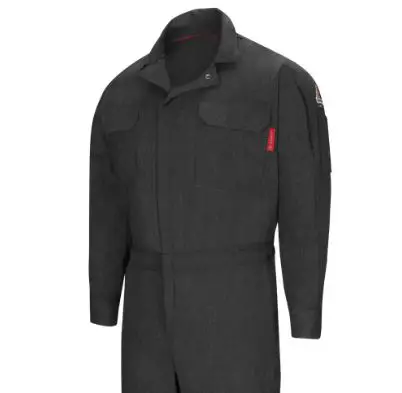
The following are arc-rated garments or gear are required to meet CAT 1:
- Arc rated long sleeve shirt, jacket, pants, coverall with a minimum arc rating of 4 cal/cm2.
- Face shield with wrap guarding, balaklava, or arc flash suit hood.
Additional garments include:
- Arc rated jacket, parka, hard hat liner, or rain gear.
Arc Flash Category 2: minimum 8 cal/cm2
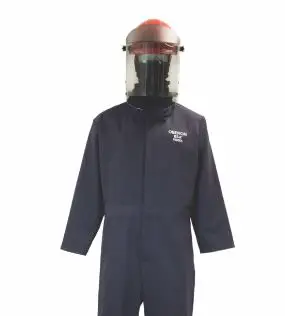
The following arc-rated garments or gear are required to meet CAT 2:
- Arc rated long sleeve shirt, pants, coverall with a minimum rating of 8 cal/cm2
- Arc rated flash suit hood or face shield, sock hood (balaclava) with a minimum arc rating of 8 cal/cm2
Additional garments include:
- Arc rated jacket, parka, hard hat liner, or rain gear.
- Heavy-duty leather gloves
- Hard hat, glasses, goggles, hearing protection
- Leather boots or footwear
Arc Flash Category 3: minimum 25 cal/cm2
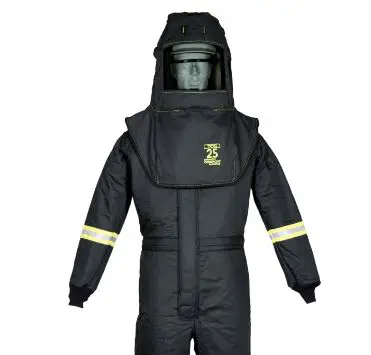
The following are arc-rated garments or gear required to meet CAT 3:
- Arc rated suit jacket, pants, coveralls with a minimum arc rating of 25 cal/cm2
- Arc rated flash suit hood with a minimum arc rating of 25 cal/cm2
- Rubber insulating gloves with leather protectors, or arc-rated gloves
Additional garments include:
- Arc rated jacket, parka, rain gear, and hard hat liner
Arc Flash Category 4: minimum 40 cal/cm2
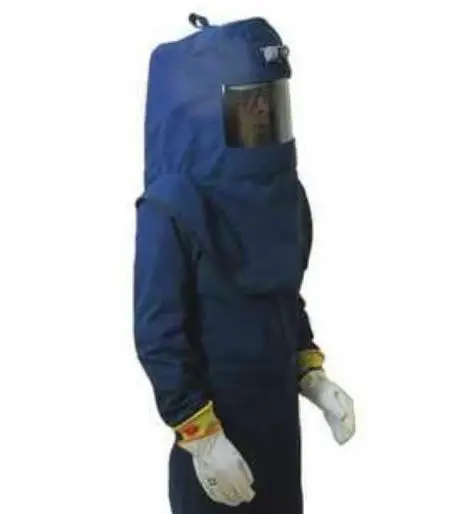
The following arc-rated garments or gear are required to meet CAT 4:
- Arc rated flash suit jacket and pants, or coveralls with a minimum arc rating of 40 cal/cm2.
- Arc rated flash suit hood with a minimum arc rating of 40 cal/cm2
- Rubber insulating gloves with leather protectors, or arc-rated gloves
Additional garments include:
- Arc rated jacket, parka, hard hat liner, or rain gear
Highly Rated Arc Flash Category 4 Suits
CAT40 Series Arc Flash Hood, Coat, and Bib Suit Kit
TCG40 Series Arc Flash Hood, Coat, and Bib Suit Kit
Salisbury by Honeywell SK40LT-M Arc Flash Protective Flash Suit Kit
Required Arc Flash Suit Functions
To be functional, an arc flash suit must:
- Be wearable by men and women
- Be available in several sizes and fit a wide range of people
- Be ergonomically shaped (comfortable to wear)
- Include only arc-rated items
- Include garments such as boots, helmet, gloves that provide full-body protection
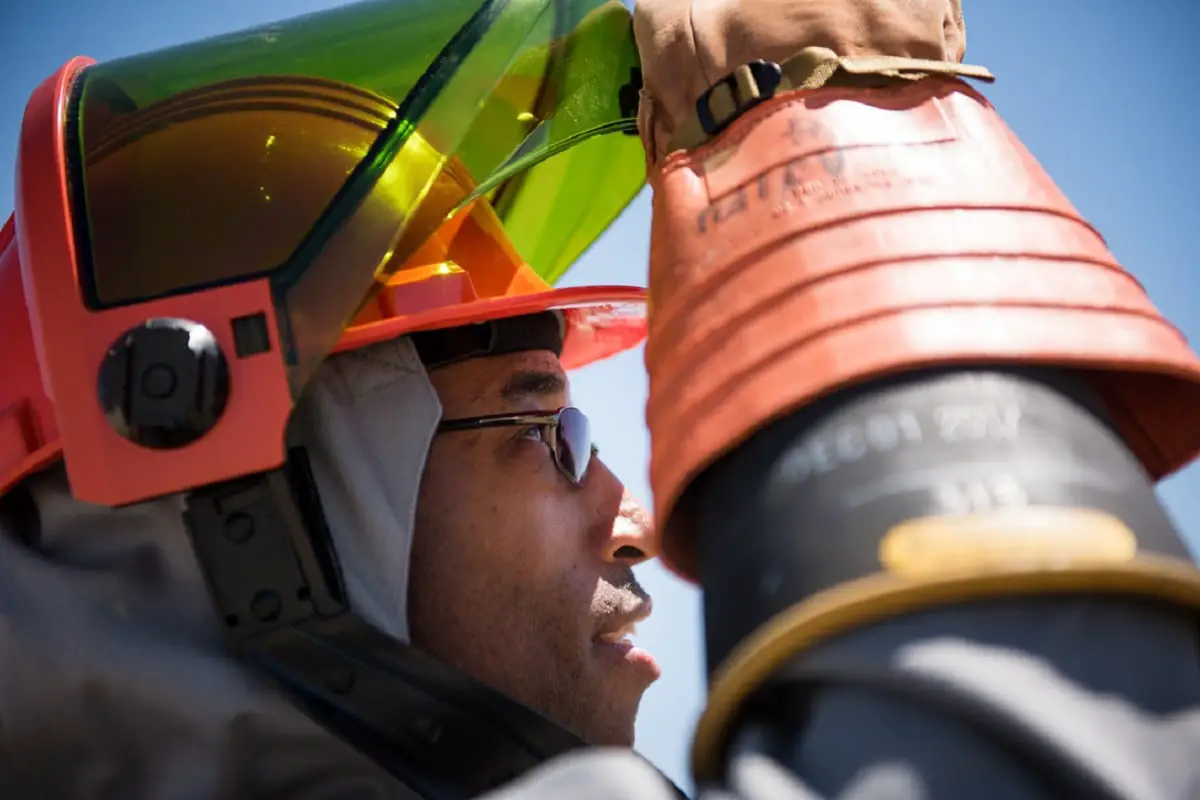
Manufacturers of arc flash suits must rely on designers, material scientists, and other professionals (tailors, leatherworkers, etc.) to create functional garments. Arc flash suits must also be tested and proven to fit within the NFPA PPE Arc categories or they will not be deemed safe.
Pieces of an Arc Flash Ensemble That Are Arc-Rated
Arc flash suits consist of a one-piece suit with hood, protective gloves and socks.
The arc flash suit itself covers the entire body from neck to ankles, typically with a high collar. The outer layer is made of metalized polyamide fabric, and the inner layer is of hydrophilic cotton fabric that adheres to the body.
The seams of the arc flash suit must be made so that the metalized layers of the fabric overlay each other to achieve electrical conductivity.
The arc flash hood protects the head and shoulders. Below the hood, there is a plastic helmet with a wrap. The voltages at work sites can be extremely large, over 400 kV (at plants up to 800kV), so a visor for face protection is needed.
The arc flash face shield protects against flying debris, molten metal and intense light flashes.
A balaclava is typically worn under the face shield and/or hood to protect the wearer from heat and burns. This is usually made of Nomex or other fire-resistant cloth.
The arc flash gloves are typically goat skin or leather over thick rubber material.
Arc flash socks have a three-layer structure, and their lower parts are connected by metal buckles to the suit’s legs.
Arc flash boots must be rubber-soled and rise high above the ankle. The boots are usually covered by the legs of the arc flash suit.
Arc Flash Suit Ratings Are Critical
Arc flash suits are specially designed safety garments that meet critical PPE standards set by the National Fire Protection Association. Be sure to only use an arc flash suit that meets these ratings when working with electrical equipment or in high arc-risk environments.
